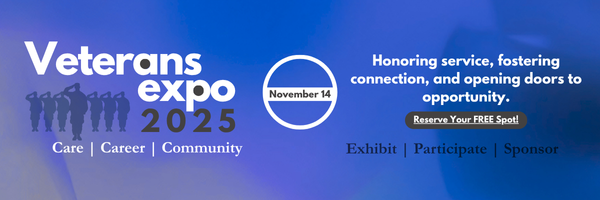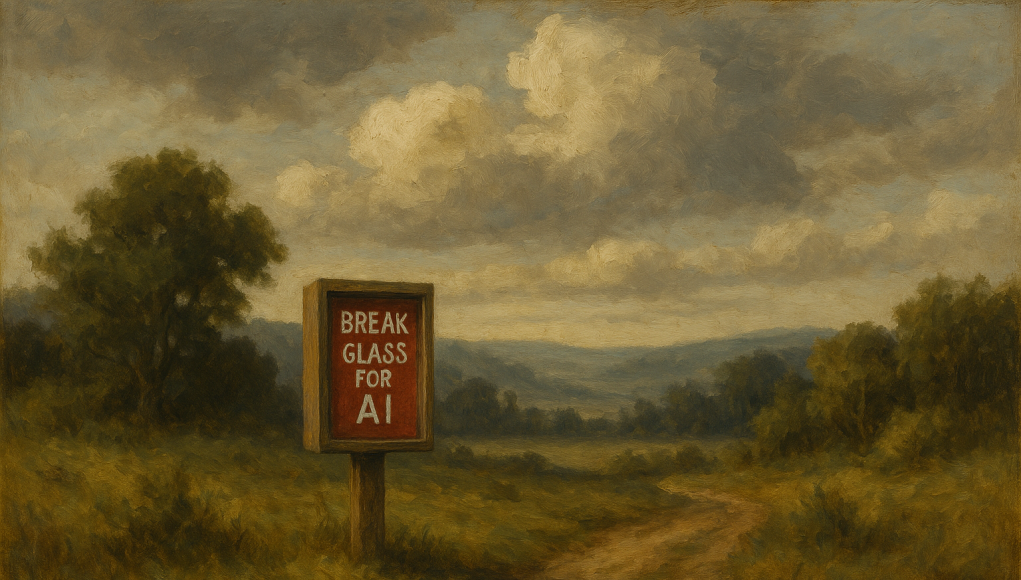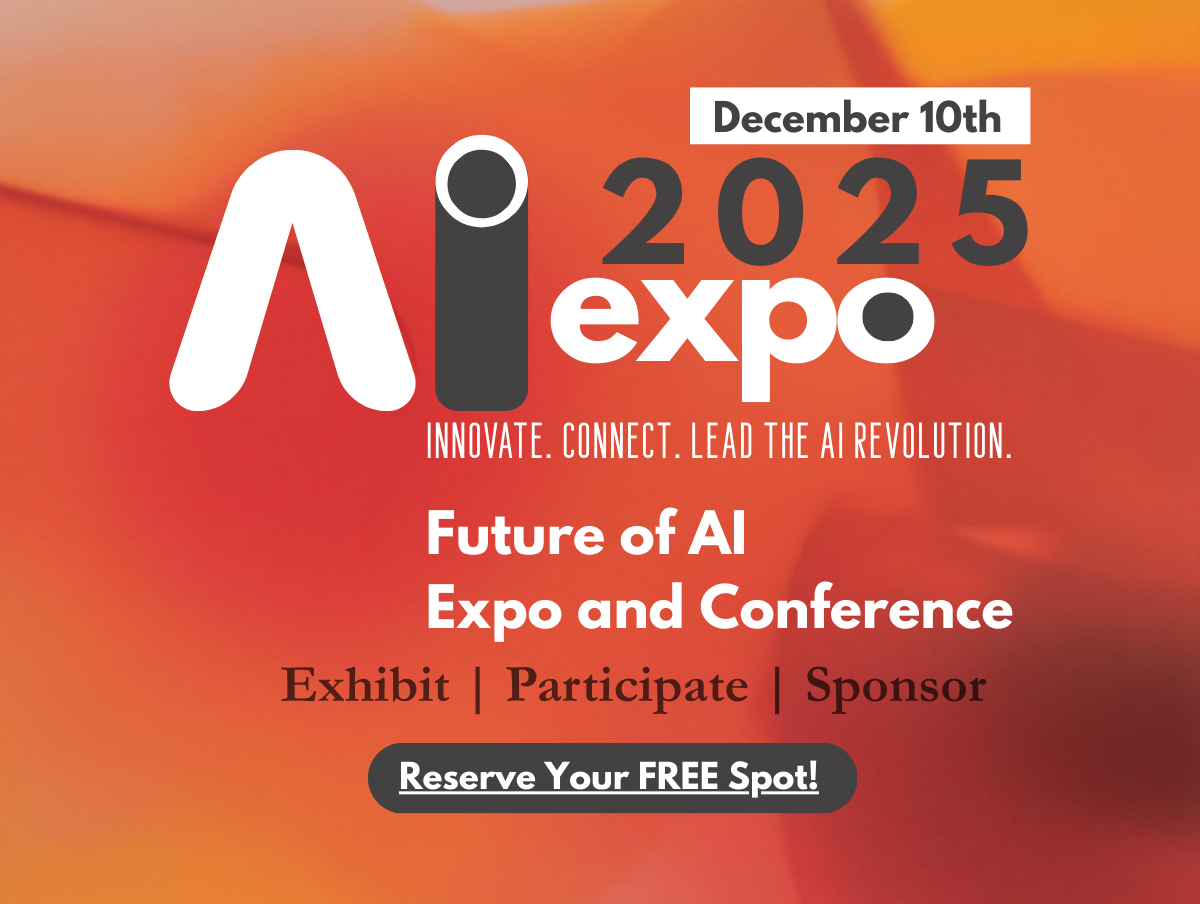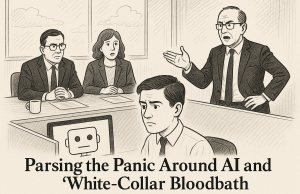Much like how ancient mariners feared the sea dragons painted on the edges of uncharted maps, today’s workers and organizational leaders approach artificial intelligence with a mix of awe, suspicion, and a whole lot of Google searches. But unlike those medieval cartographers, we don’t have the luxury of drawing dragons where knowledge ends. In the age of AI, the edge of the map isn’t where we stop—it’s where we build.
At TAO.ai, we speak often about the Worker₁: the compassionate, community-minded professional who rises with the tide and lifts others along the way. But what happens when the tide becomes a tsunami? What if the AI wave isn’t just an enhancement but a redefinition?
The workplace, dear reader, needs to prepare not for a gentle nudge but for a possible reprogramming of everything we know about roles, routines, and relevance.
Perfect. Let’s begin with the first of five long-form, storytelling-rich explorations based on the theme:
🔹 1. The Myth of Gradual Change: Expect the Avalanche
“AI won’t steal your job. But someone using AI will.” — Unknown
In the early days of mountaineering, avalanches were thought to be rare and survivable, provided you moved fast and climbed higher. But seasoned climbers know better. Avalanches don’t warn. They don’t follow logic. They descend in silence and speed, reshaping everything in their path. The smart climber doesn’t run—they plan routes to avoid the slope altogether.
Today’s workplaces—still dazed from COVID-era shocks—are staring down another silent slide: AI-driven disruption. Except this time, it’s not just remote work or digital collaboration—it’s intelligent agents that can reason, write, calculate, evaluate, and even “perform empathy.”
Let’s be clear: AI isn’t coming for “jobs.” It’s coming for tasks. But tasks are what jobs are made of.
📌 Why Gradualism is a Dangerous Myth
We humans love linear thinking. The brain, forged in the slow changes of the savannah, expects tomorrow to look roughly like today, with maybe one or two exciting LinkedIn posts in between. But AI is exponential. Its improvements come not like a rising tide, but like a breached dam.
Remember Kodak? They invented digital photography and still died by it. Or Blockbuster, which famously declined Netflix’s offer. These weren’t caught off-guard by new ideas—they were caught off-guard by the speed of adoption and the refusal to let go of old identities.
Today, many workers are clinging to outdated assumptions:
- “My job requires emotional intelligence. AI can’t do that.”
- “My reports need judgment. AI just provides data.”
- “My role is secure. I’m the only one who knows this system.”
Spoiler: So did the switchboard operator in 1920.
🧠 The AI Avalanche is Already Rolling
You don’t need AGI (Artificial General Intelligence) to see disruption. Chatbots now schedule interviews. Language models draft emails, marketing copy, and code. AI copilots help analysts find patterns faster than human intuition. AI voice tools are now customizing customer support, selling products, and even delivering eulogies.
Here’s the kicker: Even if your organization hasn’t adopted AI, your competitors, vendors, or customers likely have. You may not be on the avalanche’s slope—but the mountain is still shifting under your feet.
🌱 Worker₁ Mindset: Adapt Early, Not First
Enter the Worker₁ philosophy. This isn’t about becoming a machine whisperer or tech savant overnight. It’s about cultivating a mindset of adaptive curiosity:
- Ask: “What’s the most repetitive part of my job?”
- Ask: “If this were automated, where could I deliver more value?”
- Ask: “Which part of my work should I teach an AI, and which part should I double down as uniquely human?”
The Worker₁ doesn’t resist the avalanche. They read the snowpack, change their path, and guide others to safety.
📣 Real-World Signals You’re on the Slope
Look out for these avalanche indicators:
- Your industry is seeing “AI pilots” in operational roles (e.g., logistics, law, HR).
- Tasks like “data entry,” “templated writing,” “research synthesis,” or “first-pass design” are now AI-augmented.
- Promotions are going to those who automate their own workload—then mentor others.
If you’re still doing today what you did three years ago, and you haven’t evaluated how AI could impact it—you might be standing on the unstable snowpack.
🛠 Action Plan: Build the Snow Shelter Before the Storm
- Run a Task Audit: List your weekly tasks and mark which could be automated, augmented, or reimagined.
- Shadow AI: Try AI tools—not for performance, but for pattern recognition. Where does it fumble? Where does it shine?
- Create a Peer Skill Pod: Find 2–3 colleagues to explore new tools monthly. Learn together. Share failures and successes.
- Embrace the Role of ‘AI Translator’: Not everyone in your team needs to become a prompt engineer. But everyone will need someone to bridge humans and machines.
🔚 Final Thought
Avalanches don’t wait. Neither does AI. But just like mountain goats that adapt to sudden terrain shifts, Worker₁s can thrive in uncertainty—not by resisting change, but by learning to dance with it.
Your job isn’t to outrun the avalanche.
It’s to learn the mountain.
Great. Here’s the second long-form deep dive in the series:
🔹 2. No‑Regret Actions for Workers & Teams: Start Where You Are, Use What You Have
“In preparing for battle, I have always found that plans are useless—but planning is indispensable.” – Dwight D. Eisenhower
Imagine you’re hiking through a rainforest. You don’t know where the path leads. There are no trail markers. But you do have a compass, a water bottle, and a decent pair of boots. You don’t wait to be 100% sure where the jaguar is hiding before you move. You prepare as best you can—and you keep moving.
This is the spirit of No-Regret Moves—simple, proactive, universally beneficial actions that help you and your organization become stronger, no matter how AI evolves.
And let’s be honest: “No regret” does not mean “no resistance.” It means fewer migraines when the landscape shifts beneath your feet.
💼 What Are No‑Regret Moves?
In the national security context, these are investments made before a crisis that pay off during and after one—regardless of whether the predicted threat materializes.
In the workplace, they’re:
- Skills that remain valuable across multiple futures.
- Habits that foster agility and learning.
- Tools that save time, build insight, or spark innovation.
- Cultures that support change without collapsing from it.
They’re the “duct tape and flashlight” of the AI age—never flashy, always useful.
⚙️ No‑Regret Moves for Workers
🔍 a. Learn the Language of AI (But Don’t Worship It)
You don’t need a PhD to understand AI. You need a working literacy:
- What is a model? A parameter? A hallucination?
- What can AI do well, poorly, and dangerously?
- Can you explain what a “prompt” is to a colleague over coffee?
Worker₁ doesn’t just learn new tech—they help others make sense of it.
📚 b. Choose One Adjacent Skill to Explore
Pick something that touches your work and has visible AI disruption:
- If you’re in marketing: Try prompt engineering, AI-driven segmentation, or A/B testing with LLMs.
- If you’re in finance: Dive into anomaly detection tools or GenAI report summarizers.
- If you’re in HR: Explore AI in resume parsing, candidate sourcing, or performance review synthesis.
Treat learning like hydration: do it regularly, in sips, not gulps.
💬 c. Build a Learning Pod
Invite 2–3 colleagues to start an “AI Hour” once a month:
- One person demos a new tool.
- One shares a recent AI experiment.
- One surfaces an ethical or strategic question to discuss.
These pods build shared intelligence—and morale. And let’s be honest, a little friendly competition never hurts when it comes to mastering emerging tools.
🧠 d. Create a Personal “AI Use Case Map”
Think through your workday:
- What drains you?
- What repeats?
- What bores you?
Then ask: could AI eliminate, accelerate, or elevate this task?
Even just writing this down reshapes your relationship with change—from victim to designer.
🏢 No‑Regret Moves for Teams & Organizations
🔁 a. Normalize Iteration
Declare the first AI tool you adopt as “Version 1.” Make it known that changes are expected. Perfection is not the goal—learning velocity is.
Teams that iterate learn faster, fail safer, and teach better.
🧪 b. Launch Safe-to-Fail Pilots
Run low-stakes experiments:
- Use AI to summarize meeting notes.
- Try AI-assisted drafting for internal memos.
- Explore AI-powered analytics for team retrospectives.
The goal isn’t immediate productivity—it’s familiarity, fluency, and failure without fear.
🧭 c. Appoint an AI Pathfinder (Not Just a “Champion”)
A champion evangelizes. A pathfinder explores and documents. This person tests tools, flags risks, curates best practices, and gently nudges skeptics toward experimentation.
Every team needs a few of these bridge-builders. If you’re reading this, you might already be one.
📈 d. Redesign Job Descriptions Around Judgment, Not Just Tasks
As AI handles more tasks, job roles must elevate:
- Instead of “entering data,” the new job is “interpreting trends.”
- Instead of “writing first drafts,” it’s “crafting strategy and voice.”
Teams that rethink roles avoid the trap of “AI as assistant.” They see AI as amplifier of judgment.
🧘 Why No‑Regret Moves Matter: The Psychological Buffer
AI disruption doesn’t just hit systems—it hits psyches.
No‑Regret Actions help:
- Reduce anxiety through proactivity.
- Replace helplessness with small wins.
- Turn resistance into curiosity.
In other words, they act like emotional PPE. They don’t stop the shock. They just help you move through it without panic.
🛠 Practical Tool: The 3‑Circle “No‑Regret” Model
Draw three circles:
- What I do often (high repetition)
- What I struggle with (low satisfaction)
- What AI tools can do today (high automation potential)
Where these three overlap? That’s your next No‑Regret Move.
🧩 Final Thought
In chess, grandmasters don’t plan 20 moves ahead. They look at the board, know a few strong patterns, and trust their process.
No‑Regret Moves aren’t about predicting the future. They’re about practicing readiness—so when the board changes, you’re not paralyzed.
Prepare like the rain is coming, not because you’re certain of a storm—but because dry socks are always a good idea.
Excellent. Here’s the third long-form essay, focused on the next strategic concept:
🔹 3. Break Glass Playbooks: Planning for the Unthinkable Before It Becomes Inevitable
“When the storm comes, you don’t write the emergency manual. You follow it.” – Adapted from a Coast Guard saying
On a flight to Singapore in 2019, a midair turbulence jolt caused half the cabin to gasp—and one flight attendant to calmly, almost rhythmically, move down the aisle securing trays and unbuckled belts. “We drill for worse,” she later said with a shrug.
That’s the essence of a Break Glass Playbook—a plan designed not for normal days, but for chaos. It’s dusty until it’s indispensable.
For organizations navigating the AI age, it’s time to stop fantasizing about disruption and start preparing for it—scenario by scenario, risk by risk, protocol by protocol.
🚨 What Is a “Break Glass” Playbook?
It’s not a strategy deck or a thought piece. It’s a step-by-step guide for what to do when specific AI-driven disruptions hit:
- Who convenes?
- Who decides?
- Who explains it to the public (or to the board)?
- What tools are shut off, audited, or recalibrated?
It’s like an incident response plan for cyber breaches—but extended to include behavioral failure, ethical collapse, or reputational AI risk.
Because let’s be clear: as AI grows more autonomous, the odds of a team somewhere doing something naïve, risky, or outright disastrous with it approaches certainty.
📚 Four Realistic Workplace AI Scenarios That Need a Playbook
1. An Internal AI Tool Hallucinates and Causes Real Harm
Imagine your sales team uses an AI chatbot that falsely quotes discounts—or worse, makes up product capabilities. A customer acts on it, suffers damage, and demands restitution.
Playbook Questions:
- Who is accountable?
- Do you turn off the model? Retrain it? Replace it?
- What’s your customer comms script?
2. A Competing Firm Claims AGI or Superhuman Capabilities
You don’t even need to believe them. But investors, regulators, and the media will. Your team feels threatened. HR gets panicked calls. Your engineers want to test open-source alternatives.
Playbook Questions:
- How do you communicate calmly with staff and stakeholders?
- Do you fast-track internal AI R&D? Or double down on ethics?
- What’s your external narrative?
3. A Worker Is Replaced Overnight by an AI Tool
One department adopts an AI assistant. It handles 80% of someone’s workload. There’s no upskilling path. Morale nosedives. Others fear they’re next.
Playbook Questions:
- What is your worker transition protocol?
- How do you message this change—compassionately, transparently?
- What role does Worker₁ play in guiding affected peers?
4. A Vendor’s AI Tool Becomes a Privacy or Legal Risk
Let’s say your productivity suite uses a third-party AI writing assistant. It suddenly leaks sensitive internal data via a bug or API exposure.
Playbook Questions:
- Who notifies whom?
- Who shuts down what?
- Who owns liability?
🔐 Anatomy of a Break Glass Playbook
Each one should answer:
- Trigger – What sets it off?
- Decision Framework – Who decides what? In what order?
- Action Timeline – What must be done in the first 60 minutes? 6 hours? 6 days?
- Communication Protocol – What is said to staff, customers, partners?
- Review Mechanism – After-action learning loop.
Optional: Attach “Pre-Mortems” – fictional write-ups imagining what could go wrong.
🤝 Who Writes These Playbooks?
Not just tech. Not just HR. Not just compliance.
The most effective playbooks are co-created by diverse teams:
- Technologists who understand AI behavior.
- HR professionals who know people reactions.
- Legal experts who see exposure.
- Ethicists who spot reputational landmines.
- Workers on the ground who sense early warning signs.
Worker₁s play a key role here—they understand how people respond to change, not just how systems do.
🧠 Why Break Glass Matters in the Age of AI
Because AI mistakes are:
- Fast (it can scale wrong insights in milliseconds),
- Loud (one screenshot can go viral),
- Confusing (people often don’t know if the system or the human is at fault),
- And often untraceable (the decision logic is opaque).
Having a plan builds resilience and confidence. Even if the plan isn’t perfect, the act of planning together builds alignment and awareness.
🛠 Pro Tips for Starting Your First Playbook
- Begin with the top 3 AI tools your org uses today. For each, write down: what happens if this tool fails, lies, or leaks?
- Use tabletop simulations: roleplay a data breach or PR disaster caused by AI.
- Assign clear ownership: Every system needs a named human steward.
- Keep it short: Playbooks should be laminated, not novelized.
🧘 Final Thought
You don’t drill fire escapes because you love fires. You do it because when the smoke comes, you don’t want to fumble for the door.
Break Glass Playbooks aren’t about paranoia. They’re about professional maturity—recognizing that with great models comes great unpredictability.
So go ahead. Break the glass now. So you don’t break the team later.
Here’s the fourth deep dive in our series on AI readiness:
🔹 4. Capability Investments With Broad Utility: The Swiss Army Knife Approach to AI Readiness
“Build the well before you need water.” – Chinese Proverb
In the dense rainforests of Borneo, orangutans have been observed fashioning makeshift umbrellas from giant leaves. They don’t wait for the monsoon. They look at the clouds, watch the wind, and prepare. Evolution favors not just the strong, but the versatile.
In organizational terms, this means investing in capabilities that help under multiple futures—especially when the future is being coded, debugged, and deployed in real time.
As AI moves from supporting role to starring act in enterprise life, we must ask: what core capacities will help us no matter how the plot twists?
🔧 What Are “Broad Utility” Capabilities?
These are:
- Skills, tools, or teams that serve across departments.
- Investments that reduce fragility and boost adaptive capacity.
- Capabilities that add value today while preparing for disruption tomorrow.
They’re the organizational equivalent of a Swiss Army knife. Or duct tape. Or a really good coffee machine—indispensable across all seasons.
🧠 Three Lenses to Identify High-Utility Capabilities
1. Cross-Scenario Strength
Does this capability help in multiple disruption scenarios? (E.g., AI hallucination, talent gap, model drift, regulatory changes.)
2. Cross-Team Applicability
Is it useful across functions (HR, legal, tech, ops)? Can others plug into it?
3. Cross-Time Value
Does it provide near-term wins and long-term resilience?
🏗️ Five Broad Utility Investments for AI-Ready Organizations
🔍 a. Attribution & Forensics Labs
When something goes wrong with an AI system—bad decision, biased output, model drift—who figures out why?
Solution: Build small teams or toolkits that can audit, debug, and explain AI outputs. Not just technically—but ethically and reputationally.
Benefit: Works in crises, compliance reviews, and product development.
👥 b. Worker Intelligence Mapping
Know who can learn fast, adapt deeply, and lead others through complexity. This isn’t a resume scan—it’s an ongoing heat map of internal capability.
Solution: Use dynamic talent systems to track skill evolution, curiosity quotient, and learning velocity.
Benefit: Helps with upskilling, redeployment, and AI adoption planning.
🧪 c. Experimentation Sandboxes
You don’t want every AI tool tested in production. But you do want curiosity. So create safe-to-fail zones where teams can:
- Test new AI co-pilots
- Try prompt variants
- Build small automations
Benefit: Builds internal fluency and democratizes innovation.
🧱 d. AI Guardrail Frameworks
Develop policies that grow with the tech:
- What constitutes acceptable use?
- What gets escalated?
- What ethical red lines exist?
Create reusable checklists and governance rubrics for any AI system your company builds or buys.
Benefit: Prepares for compliance, consumer trust, and employee empowerment.
🎙️ e. Internal AI Literacy Media
Start your own AI knowledge series:
- Micro-videos
- Internal podcasts
- Ask-an-Engineer town halls
The medium matters less than the message: “This is for all of us.”
Benefit: Informs, unifies, and calms. A literate workforce becomes a responsible one.
🔁 Worker₁’s Role in Capability Building
Worker₁ isn’t waiting for permission. They’re:
- Starting small experiments.
- Mentoring peers on new tools.
- Asking uncomfortable questions early (before regulators do).
- Acting as “connective tissue” between AI systems and human wisdom.
They’re not just learning AI—they’re teaching organizations how to grow through it, not just around it.
🧠 The Meta-Capability: Learning Infrastructure
Ultimately, the most important broad utility investment is the capacity to learn faster than the environment changes.
This means:
- Shorter feedback loops.
- Celebration of internal experimentation.
- Org-wide permission to evolve.
Or, in rainforest terms: the ability to grow new roots before the old canopy crashes down.
🛠 Quick Start Toolkit
- Create an AI “Tool Census”: What’s being used, where, and why?
- Run a Capability Fire Drill: Simulate a failure. Who responds? What’s missing?
- Build a Capability Board: Track utility, adoption, and ROI—not just features.
- Reward Reusability: Encourage teams to build shareable templates and frameworks.
🔚 Final Thought
You can’t predict the storm. But you can plant trees with deeper roots.
Invest in capabilities that don’t care which direction the AI winds blow. Build your organization’s “multi-tool mindset.” Because when the future arrives sideways, only the flexible will stay standing.
Here’s the fifth and final piece in our series on preparing workers and organizations for an AI-driven future:
🔹 5. Early Warning Systems & Strategic Readiness: Sensing Before the Slide
“The bamboo that bends is stronger than the oak that resists.” – Japanese Proverb
In Yellowstone National Park, researchers noticed something strange after wolves were reintroduced. The elk, no longer lounging near riverbanks, kept moving. Trees regrew. Birds returned. Beavers reappeared. One species shifted the behavior of many—and the ecosystem adapted before collapse.
This is what early warning looks like in nature: not panic, but sensitive awareness and subtle recalibration.
In the age of AI, organizations need the same: the ability to detect small tremors before the quake, to notice cultural shifts, workflow cracks, or technological drift before they become existential.
🛰️ What Is an Early Warning System?
It’s not just dashboards and alerts. It’s a strategic sense-making framework that helps leaders, teams, and individuals answer:
- Is this a signal or noise?
- Is this new behavior normal or a harbinger?
- Should we pivot, pause, or proceed?
Think of it like an immune system for your organization: identifying threats early, reacting proportionally, and learning after each exposure.
🔍 Four Types of AI-Related Early Warnings
1. Behavioral Drift
- Employees start using unauthorized AI tools because sanctioned ones are too clunky.
- Workers stop questioning AI outputs—even when results feel “off.”
🧠 Signal: Either the tools aren’t aligned with real needs, or the culture discourages challenge.
2. Ethical Gray Zones
- AI starts producing biased or manipulated outputs.
- Marketing uses LLMs to write “authentic” testimonials.
🧠 Signal: AI ethics policies may exist, but they’re either unknown or unenforced.
3. Capability Gaps
- Managers can’t explain AI-based decisions to teams.
- Teams are excited but unable to build with AI—due to either fear or lack of skill.
🧠 Signal: Upskilling isn’t keeping pace with tool adoption. Fear is filling the vacuum.
4. Operational Fragility
- One key AI vendor updates their model, and suddenly, internal workflows break.
- A model’s hallucination makes it into a public-facing document or decision.
🧠 Signal: Dependencies are poorly mapped. Governance is reactive, not proactive.
🛡️ Strategic Readiness: What to Do When the Bell Tolls
Being aware is step one. Acting quickly and collectively is step two. Here’s how to make your organization ready:
🧭 a. Create AI Incident Response Playbooks
We covered this in “Break Glass” protocols—but readiness includes testing those plans regularly. Tabletop exercises aren’t just for cyberattacks anymore.
🧱 b. Establish Tiered Alert Levels
Borrow from emergency management:
- Green: Monitor
- Yellow: Investigate & inform
- Orange: Escalate internally
- Red: Act publicly
This prevents overreaction—and ensures swift, measured response.
📣 c. Build Internal “Whistleblower Safe Zones”
Sometimes, your most important warning comes from a skeptical intern or a cautious engineer. Create channels (anonymous or open) where staff can raise ethical or technical concerns without fear.
📊 d. Develop “Human-AI Audit Logs”
Don’t just track what the model does—track how humans interact with it. Who overrules AI? Who defaults to it? This shows where trust is blind and where training is needed.
🌱 Worker₁’s Role in Early Warning
The Worker₁ isn’t just a productive asset—they’re a sensor node in your organizational nervous system.
They:
- Spot weak signals others dismiss.
- Speak up when AI oversteps.
- Help others decode uncertainty.
- Translate human discomfort into actionable feedback.
Most importantly, they model maturity in the face of flux.
🧠 The Meta-Shift: From Surveillance to Sensing
Don’t confuse readiness with rigidity. True preparedness is not about locking systems down—it’s about staying flexible, responsive, and aligned with purpose.
We don’t need more cameras. We need more listeners. More honest conversations. More interpretive capacity.
The organizations that thrive won’t be the most high-tech—they’ll be the ones that noticed when the water temperature started to rise and adjusted before the boil.
🛠 Starter Kit: Building Your AI Early Warning Engine
- Conduct a “Crisis Rehearsal Week” once a year—simulate disruptions and monitor team response.
- Run a Monthly Signal Scan: 3 team members report anything odd, promising, or problematic in AI use.
- Create an AI Observers Network: Volunteers from different departments report quarterly on AI impact.
- Establish an Internal AI Risk Registry—a living list of known system risks, ethical concerns, and technical gaps.
🧘 Final Thought
When herds sense a predator, it’s not always the loudest that survives. It’s the first to feel the grass shift. The first to listen to the silence.
In an AI-driven world, readiness isn’t about fearing the future. It’s about becoming the kind of organization that adapts faster than the threat evolves.
In Yellowstone, the wolves didn’t ruin the system—they reminded it how to listen again.
Let’s build workplaces that listen.
Would you like a recap post tying all five essays together into a cohesive summary for Worker₁-led transformation in the AI era?
At TAO.ai, we believe the AI era won’t be won by the fastest adopters—but by the wisest integrators.
🌾 Final Thought: Prepare Like a Farmer, Not a Firefighter
In the age of AI, the temptation is to become a firefighter—ready to spring into action the moment the algorithm misbehaves or the chatbot says something strange. But firefighting is reactive. Exhausting. Unsustainable. And when the flames come too fast, even the best teams can be overwhelmed.
Instead, we must prepare like farmers.
Farmers don’t control the weather, but they read the sky. They don’t predict every storm, but they plant with intention, build healthy soil, and invest in relationships with the land. They know that resilience isn’t built in the moment of harvest—it’s nurtured through daily choices, quiet preparations, and a deep understanding of cycles.
So let us be farmers in the era of intelligence.
Let us sow curiosity, water collaboration, and prune away the processes that no longer serve. Let us rotate our skills, tend to our teams, and build systems that can grow—even through drought, even through disruption.
Because in the end, AI won’t reward those who panic best—it will elevate those who cultivate wisely, adapt patiently, and harvest together.
The future belongs to those who prepare not just for change, but for renewal.
Let’s start planting.



















![The Economics of a Disrupted Workforce: When the Bet on Bots Backfires [Part1] When the Bet on Bots Backfires: The Economics of a Disrupted Workforce](https://theworktimes.com/wp-content/uploads/2025/05/ChatGPT-Image-May-20-2025-03_51_39-PM-238x178.png)









